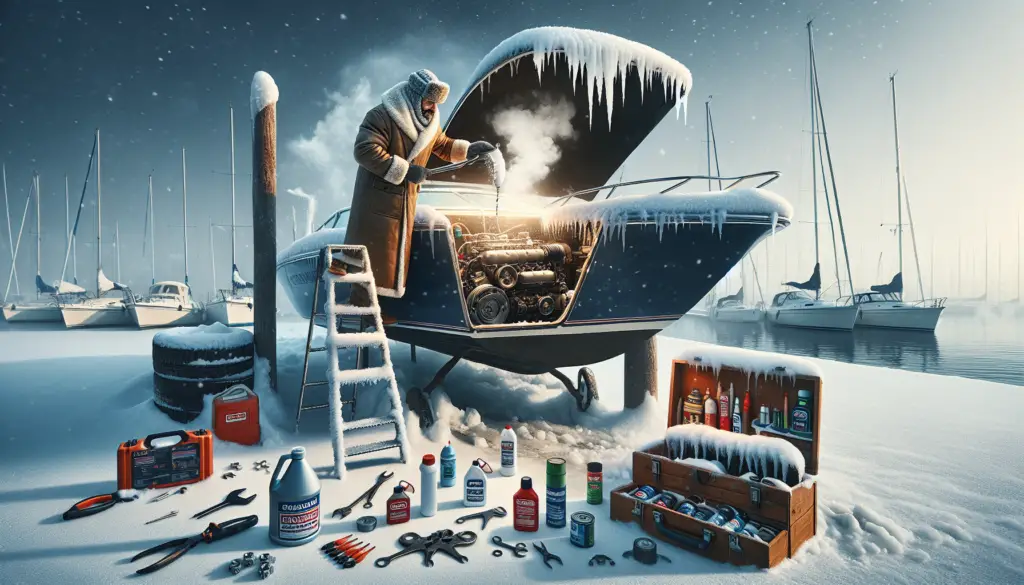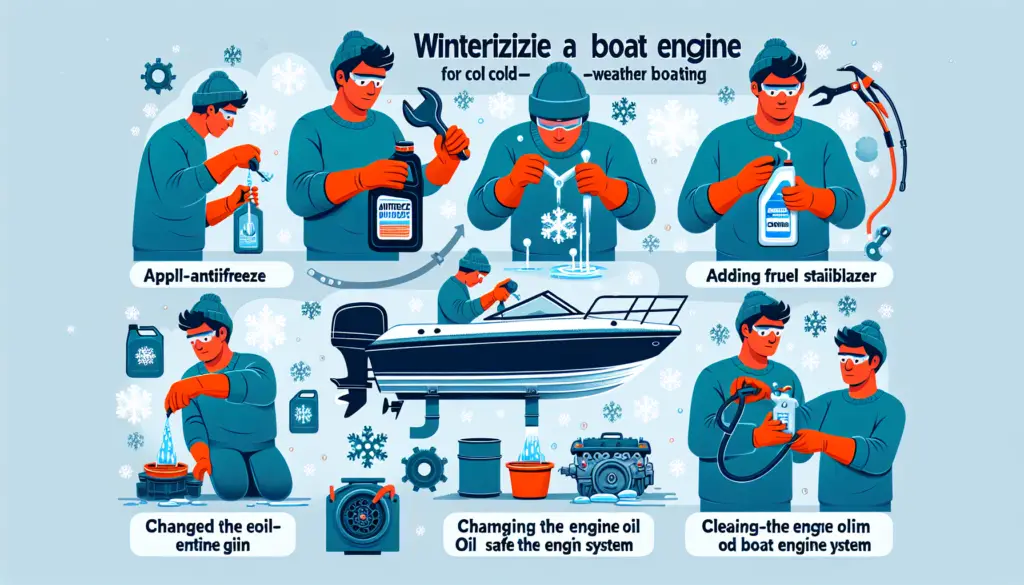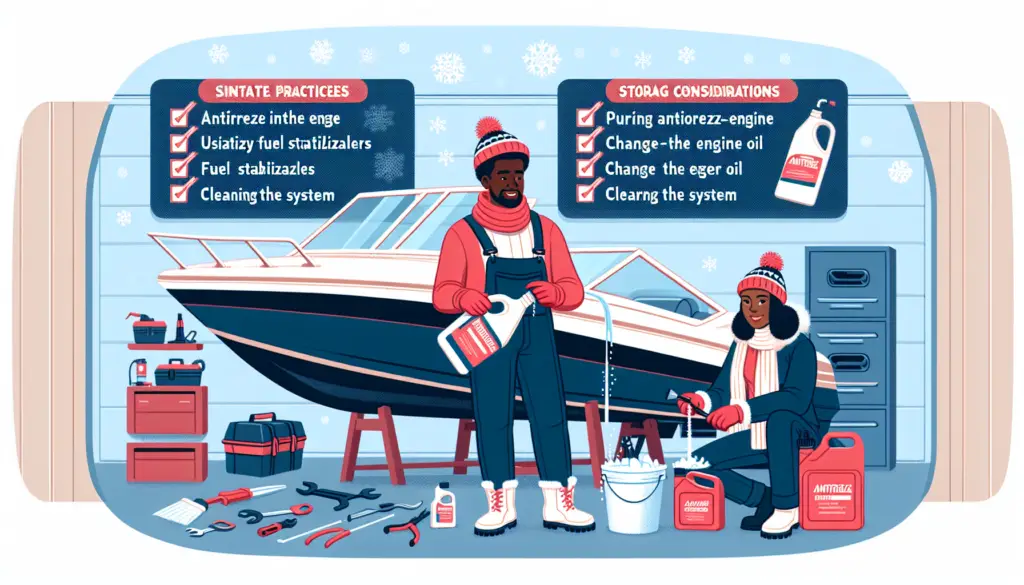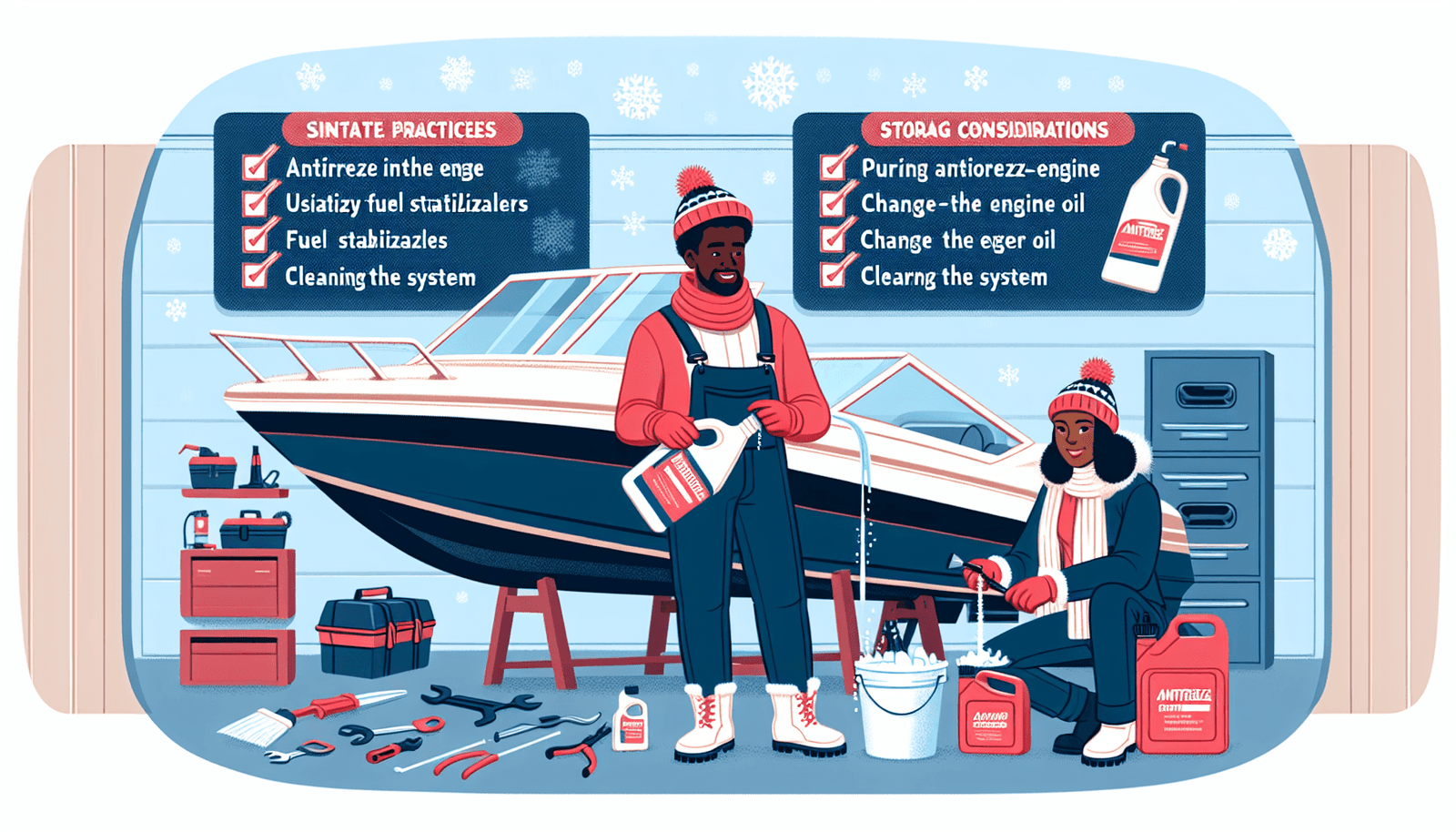Imagine gliding through those idyllic waters next summer without a hitch, thanks to your smart decision to take care of your boat engine during the colder months. The best boat engine winterization practices for cold weather boating are your ticket to endless sunny days of smooth sailing, free from the worry of unexpected breakdowns. This article enlightens you about those meticulous steps and precautions needed for your boat’s winter conditioning. Remember, it’s much more than just keeping your boat under wraps; it’s about nurturing your prized possession in preparation for your countless future trips.

Understanding the Importance of Boat Engine Winterization
As a boat owner or enthusiast, it’s vital to know about boat engine winterization. This process is essentially a preventative care strategy to protect your boat engine during winter months. If left neglected, harsh winter conditions can cause significant damage to various components of your boat engine.
Consequences of Neglecting Winterization
Failures to winterize your boat can lead to some unpleasant consequences. Cold temperatures can cause water inside your engine to freeze, potentially causing cracks in the engine block, damage to exhaust manifolds, and the deterioration of various rubber and plastic components. Also, unattended fuel left in the engine can degrade and lead to gumming, which can clog the carburetor or fuel injection system, causing poor performance or failures.
Long-Term Maintenance and Optimization of Boat Performance
Remember, winterization is not just about keeping your boat safe during the cooler months. It’s also about ensuring the long-term performance and maintenance of your vessel. By proactively winterizing, you’re not only protecting your engine from immediate damages but also enhancing the overall lifetime of your boat and optimize its performance.
Analyzing the Types of Boat Engines
There are several types of boat engines, each with its own considerations for winterization.
Inboard Engines
Inboard engines are typically protected by the hull of the boat, but still require careful consideration for winterizing. These engines are often similar to car engines and have similar winterization needs.
Outboard Engines
Outboard engines are more exposed and hence, more vulnerable to winter weather. Also, water is used directly from the surrounding environment for cooling, necessitating special attention to prevent freezing damage.
Sterndrive Engines
Sterndrive engines often combine features of both inboard and outboard engines, with portions within the boat and others outside. Because of this, winterizing requires attention to both inboard and outboard engine maintenance procedures.
Basics of Diesel Engines
Diesel engines, which are often large and powerful, have their own specific winterization requirements. They often involve protective measures against gumming and varnishing, which can occur with diesel fuel over winter.
Preparations for Winterization
Winterizing your boat engine is not a hasty process. It requires considerable preparation.
Detaching the Boat Engine Safely
First and foremost, it involves carefully detaching the boat engine. Ensure you disconnect the battery and carefully remove any connection to avoid any injuries or damages.
Locating a Suitable Indoor Storage Space
Ideally, a boat should be stored indoors during the winter months. The warmer and drier environment in an indoor space can provide protection from harsh outdoor winter conditions.
Gathering the Necessary Winterization Tools and Products
Lastly, have your winterization toolkit ready, which usually includes the basic tools needed for engine maintenance, as well as specialized products like antifreeze, fogging oil, and fuel stabilizer.
In-depth Processes of Winterizing Different Types of Boat Engines
Regardless of whether you’ve an inboard, outboard, sterndrive, or diesel engine, winterization requires meticulous steps and procedures.
Winterizing Inboard Engines
Inboard engines generally need a thorough flush, draining of fluids, application of antifreeze, and application of fogging oil to the cylinders to prevent corrosion.
Winterizing Outboard Engines
Winterizing outboard engines typically involves cleaning and flushing, draining the gearcase, filling with fresh oil, and applying fogging oil to protect against rust.
Winterizing Sterndrive Engines
Storage procedures for sterndrive engines often involve tasks from both inboard and outboard procedures due to their hybrid nature.
Winterizing Diesel Engines
Diesel engines generally require a thorough cleaning, along with the replacement of oil and filters, draining of coolant and replacement with antifreeze, and the addition of a fuel stabilizer to prevent degradation of diesel in the fuel system.

Cleaning and Flushing the Engine
Regardless of the type of boat engine, cleaning and flushing play a critical role in winterizing.
Why Cleaning and Flashing Is Vital
This process isn’t just about removing dust and debris. It’s also about removing salt, sediments and other contaminants that can cause rust or corrosion if allowed to sit over winter.
Procedures for Cleaning and Flashing
Specific procedures depend on the type and model of your engine, but generally involve running fresh water through the cooling system, possibly with a cleaning product included.
Preventing Rust and Corrosion
After cleaning, it’s essential to apply fogging oil or similar products on the engine, as these help to form a protective coat against moisture, thus preventing rust and corrosion.
Draining Engine Fluids
Draining engine fluids is another crucial winterizing task.
Procedures for Draining Coolants
You should drain the coolant from your engine, paying specific attention to any holding tanks or secondary systems.
Draining the Engine Oil
Old engine oil should be drained as it can contain contaminants which might damage the engine.
Ensuring Total Fluid Drainage
Ensure all fluid is thoroughly drained, as remaining fluid can freeze and cause damage to the engine.

Change of Engine Oil and Filters
With the old oils drained, you’ll need to replenish with fresh oil and replace the filters.
Importance of Fresh Oil for Winterization
Fresh oil helps to protect against corrosion and ensures smooth operation when you restart the engine after winter.
Procedures for Changing Engine Oil
Changing engine oil requires careful attention to avoid spills and it’s often recommended to let professionals handle this task.
Changing and Choosing the Right Filters
Similarly, filter replacement is critical for ensuring clean operation and the selection of the right filters can greatly impact your engine’s health.
Protection Against Freezing
As you winterize your boat engine, measures against freezing should be a priority.
Predicting Freezing Risks for Marine Engines
Take into consideration the typical temperature ranges in your area and use adequate products and procedures to mitigate these risks.
Utilizing Antifreeze Products
Antifreeze can provide valuable protection against freezing damage, so it’s important to apply it carefully.
Other Measures against Freezing
Other measures, such as indoor storage and engine covers, can provide additional protection.

Fuel System Winterization
Fuel system also need attention during winterization.
Draining the Fuel System
Draining the fuel system removes old fuel that can degrade over time and cause problems when restarting the engine.
Addition of Fuel Stabilizers
Fuel stabilizers can prevent fuel degradation if any fuel is left in the system.
Storing the Boat with a Full or Empty Fuel Tank
Opinions on this matter vary, so it’s best to consult with a local professional or follow your engine manufacturer’s recommendations.
Restarting the Boat Engine After Winter
When winter is over and you’re ready to get your boat on the water again, de-winterization is another new journey.
Inspection before Starting
A thorough inspection should be executed to ensure all elements are in the correct state before the engine is started.
De-Winterizing Practices
De-winterization often involves reversing the winterization tasks, but also requires specific practices like reconnection of batteries, checking out for any leaks, etc.
Ensuring Smooth Restoration of Boat Functionality
With the right steps, your boat should be back in operation smoothly, giving you the joyous moments in water you’ve missed throughout winter.
Now that you’re equipped with the knowledge of how crucial boat engine winterization is, it’s well overdue you start planning. Remember to take the process seriously and not to rush through it. After all, a well-cared-for boat engine can mean more memorable and pleasurable water adventures. Happy boating!

